A cathedral treasure in America
1942
Quedlinburg, Germany.
The cathedral treasure of the women's monastery, mainly consisting of gifts from the Ottonian dynasty, is carefully packed in crates and removed from storage to protect it from bomb attacks. The treasure is hidden in a cave under the Altenburg, near the former royal palace Quedlinburg and regularly inventoried as Heinrich Himmler has instructed. The treasures are second to none! Just look at the unique Samuhel Gospel...
This manuscript, written in gold ink by monk Samuhel in the 9th century, was bound in this magnificent binding in the 13th century. On calf parchment the over 1000 year old book tells about the life and work of Jesus. It is assumed to be the gift of King Henry of Saxony. You can find more information about this here.
On April 12th, 1945, all the crates were still there.
What did Lieutenant Joe T. Meador think when he entered the Altenburg Cave one day in April 1945? It was actually guarded by Allied compatriots, but somehow he managed to avoid this circumstance. Now he stood alone and undisturbed in front of the crates and began to remove some of the objects. He might have thought: This is the opportunity! And he used it.
Meador, born in America in 1916, had been an art student. Thus he had an eye for what was in front of him. He did not fully understand what exactly it was, but artefacts like this reliquary had to be of enormous value. And so he took quietly and secretly what his hands allowed him to carry. A total of 12 pieces disappeared. Witnesses or a lead - he didn't leave any of it. From now on 44 years should pass until the world would get to see one of the objects again.
1988
The Gospel appears!
The international art market is in turmoil when suddenly the Samuhel Gospel is for sale. No one on the official side was able to determine the owner. In 1989, the Cultural Foundation of the newly reunited Germany and the Federal Ministry of the Interior aimed for funding and, under dramatic circumstances, finally succeeded in acquiring the codex for a "finder's reward" of DM 5 million. So far, so good. But where was the rest?
Inofficial Investigations.
The New York Times had called him "Agent of the German government". But Willi Korte was that by no means, on the contrary. There has never been an official order. The art detective acted on his own. Even before the German reunification, he was personally approached by the curator of the Prussian Cultural Heritage Foundation and familiarized with the cathedral treasure in private. There were no official ways to investigate, but if Korte could on his own responsibility... utmost discretion... then...
And Korte went to Washington without authorization. He began to search the released archives, because there was the assumption that the treasure somehow came to the USA in the course of the occupation of Germany. Everything else was in the dark. Korte had to find out which military unit had taken Quedlinburg and then whether there was a note on the Altenburg Cave in the reports of this unit. A time-consuming Sisyphean task.
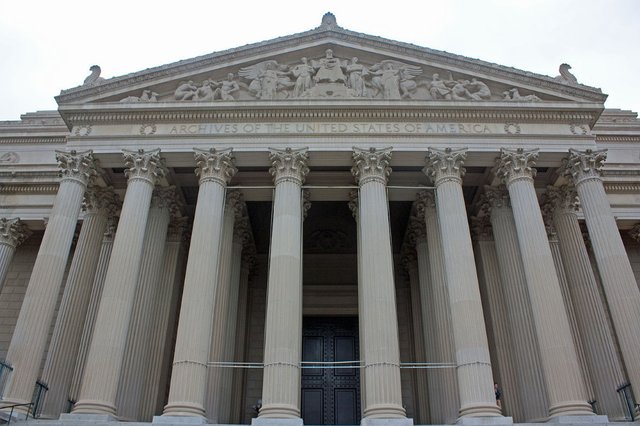
The trail led to the fourth cavalry regiment, but the war diary did not give up the names of the officers and Korte was stuck. Only the article in the New York Times was supposed to open further doors for him. Korte had tried to publish the case and worked with perseverance on a journalist until he finally published his own story. Now there was pressure on the art market and so it came to a memorable meeting.
A conversation without words.
The New York antiquarian bookshop Kraus, so Korte heard, might have been involved in the deal for the Samuhel Gospel. He went to the antiquarian bookstore and talked to an employee. At first, the conversation was one-sided. Korte asked him about the cathedral treasure and tried to get answers. But the employee kept a low profile and stayed quiet. In these circles, professional honour forbids talking about clients. Instead, the employee chose another way, he silently presented Korte with a map of Texas and placed a pencil on it. But he didn't place it just anywhere. The top pointed to Whitewright, a small town north of Dallas!
And that's not everything. The employee also submitted a letter to the alleged "government commissioner" concerning the settlement of an estate. A certain John Farley, director of the First National Bank in Whitewright, had addressed the art experts. These were decisive clues with which Korte now hastily boarded a plane in the direction of Dallas.
1990
Whitewright, Texas.
But Farley turns out to be a tough one. Korte couldn't get him to divulge information. The director of the bank was playing for time. And it was close. It remained to be feared that further pieces from the cathedral treasure could be sold. But without evidence or conclusive evidence, Korte could not make any progress. Then William Honan published another article in the Times. Korte's friend in the editorial office had not been idle. He managed to find the name of an officer who fit the person he was looking for: Joe Tom Meador! And that same officer was from Whitewright.
Now the pieces of the puzzle pushed together to a picture, which resulted in a conclusive chain of clues. Whether it would also lead to the treasure, however, remained questionable. Meador had died in 1980 and had taken his secret to his grave. So Korte confronted the heirs at Whitewright. Accompanied by a film team, he went to meet them. However, they could not be disconcerted at all and refused any statement.
Stagnation?
Fortunately not, because the Meadors had already put themselves in an awkward position. In Switzerland another piece of the cathedral treasure appeared and was offered for sale. It was the evangelist of Saint Wiperti. This sale was obviously unstoppable when Korte asked her for cooperation. And now things got too hot. Bank manager Farley knew exactly where the objects were and when he got wind of selling another one, he took Jack Meador to have a serious word with him...
June 20th, 1990
With success! Even if the old Jack Meador did not immediately want to give in, he finally contacted Korte. As a result, everything happened very quickly. The heirs opened their safe deposit box at the First National Bank of Whitewright. And indeed, in simple cardboard boxes most of the missing pieces of the cathedral treasure were found. It was a sensation and Korte reached his goal!
1993
Quedlinburg, Germany.
The whole matter was now highly official and after negotiations, settlements and payments the cathedral treasure finally returned to Quedlinburg. But two pieces are still missing. A rock crystal bottle and a reliquary cross. So keep your eyes open! :-)
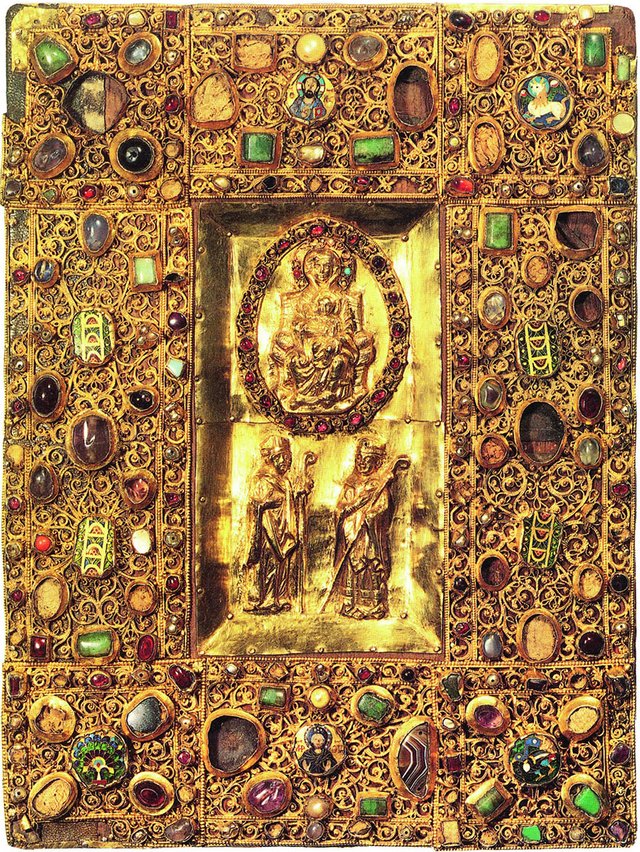


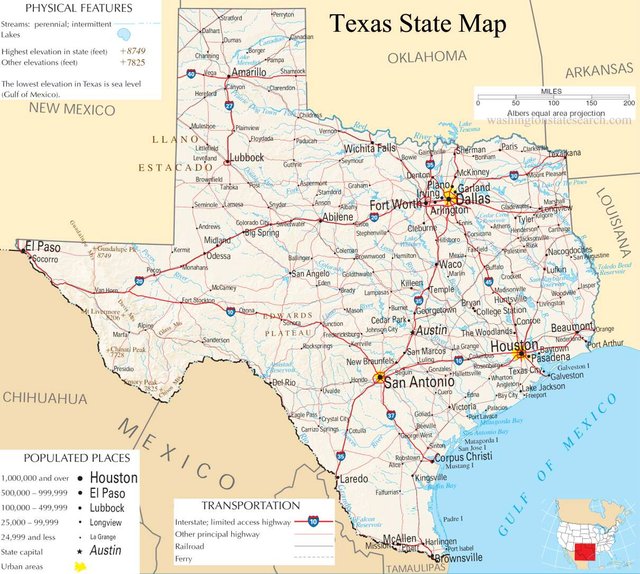
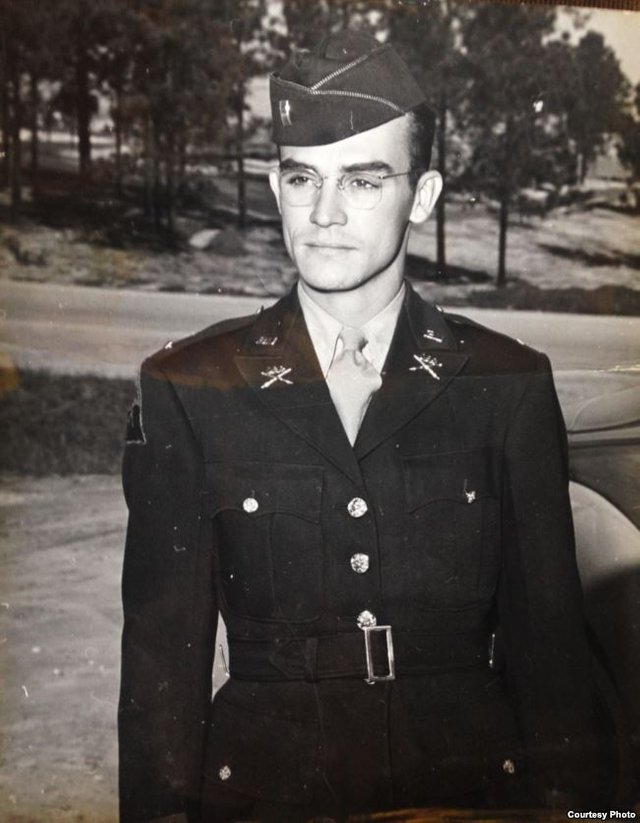
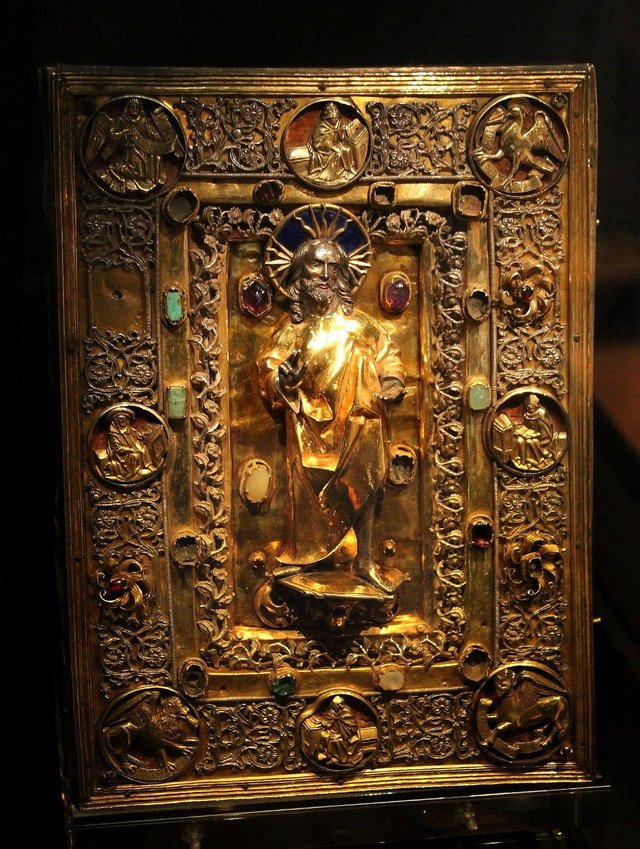
Amazing story! Many top class mystery writers could not create such an interesting and plausible story. Thank you for showing it to us!
it's my pleasure. thx
Thank you for your continued support of SteemSilverGold